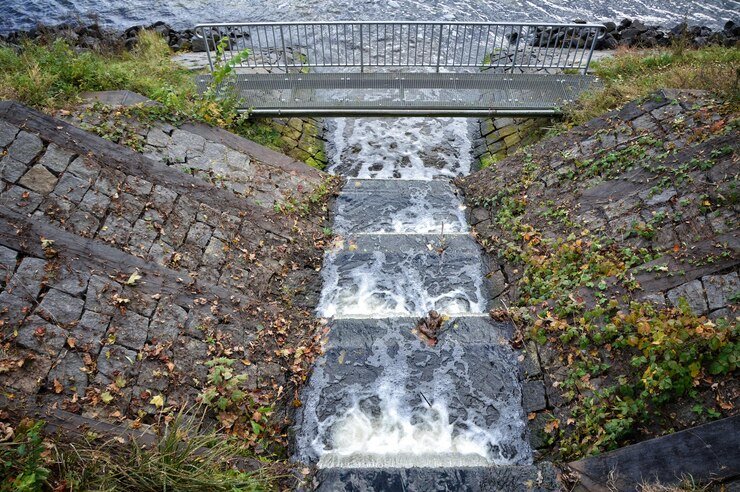The Lifeline for Migratory Fish at Granite Falls
Nestled in the scenic beauty of Washington State, the Granite Falls Fish Ladder stands as a remarkable feat of engineering. It is a critical structure for the survival of migratory fish species and a symbol of environmental preservation. This fish ladder plays a pivotal role in maintaining the delicate balance of the local ecosystem, offering a safe passage for fish to bypass otherwise insurmountable barriers.
Whether you’re a passionate conservationist or someone looking for inspiration from environmental success stories, this deep dive will showcase why the Granite Falls Fish Ladder matters and continues to be a beacon of sustainability and community involvement.
A Brief History of the Granite Falls Fish Ladder
The origins of the Granite Falls Fish Ladder date back to concerns about declining fish populations in Washington waters. Located along the South Fork Stillaguamish River near the town of Granite Falls, this ladder was conceptualized to mitigate the challenges migratory fish faced with the natural falls. The steep cascades, while picturesque, created an almost impossible barrier for species like salmon to return to their upstream spawning grounds.
Built in the 1950s through a combined effort of government agencies, local engineers, and community groups, the fish ladder was designed to replicate natural river conditions. Over the years, it has undergone several upgrades to accommodate the latest conservation methods and ensure optimal fish passage.
Helping Wildlife Thrive
A Gateway for Migratory Fish
The most direct beneficiaries of the Granite Falls Fish Ladder are the fish species that rely on uninterrupted migration routes. Salmon—both Chinook and Coho—are among the primary species the ladder supports during their annual migration to upstream spawning grounds. Steelhead trout and other species also rely on this critical pathway.
Without the fish ladder, these species face significant barriers to reproduction and survival, impacting not only their populations but also the intricate ecosystems they are part of. By ensuring safe passage, the fish ladder aids in maintaining the life cycle of these species, helping juveniles return downstream while supporting healthy biodiversity across the river.
Supporting a Global Ecosystem
The significance of the ladder extends far beyond Granite Falls. Salmon are known as a keystone species, crucial to both aquatic life and terrestrial wildlife. Birds, bears, and other animals depend on salmon populations thriving in the local rivers. A decline in salmon numbers can disrupt entire food chains, emphasizing how local conservation efforts like this fish ladder have a ripple effect globally.

Environmental Impact of the Granite Falls Fish Ladder
The Granite Falls Fish Ladder has not only had an ecological impact but has also aided in reversing the damage caused by human activities like damming, pollution, and waterway obstruction. By enabling fish passage, it plays a critical role in the restoration of local waterways.
Its implementation has allowed for re-naturalization. Improved fish populations have led to healthier aquatic environments, cleaner rivers, and the revival of other species dependent on balanced ecosystems. The ladder also inspires ongoing environmental innovation and serves as a model for sustainable engineering projects in other regions.
Community at the Heart of Conservation
Collaboration in Action
The success of the Granite Falls Fish Ladder would not have been possible without the involvement of local organizations, tribal groups, government bodies, and members of the local community. Tribal co-management ensures that indigenous voices are heard in maintaining the culturally significant salmon population.
Grants and public fundraising have also played a crucial role in funding continual maintenance and education programs associated with the fish ladder. This shows how cooperative efforts can bring positive environmental changes.
Empowering Residents
The ladder has enhanced awareness of the importance of environmental stewardship. Through workshops, volunteer programs, and citizen science initiatives, the residents of Granite Falls have become key players in ensuring the long-term health of their waterways.
From Education to Tourism
Nature as a Classroom
The Granite Falls Fish Ladder has grown beyond its primary function—it’s now a powerful teaching tool. Guided tours and workshops offer visitors the chance to learn about the life cycle of fish, the role of biodiversity in ecosystems, and the importance of conservation efforts.
Students from nearby schools often visit the fish ladder to see science in action, forging early connections with nature and understanding the pressing need for sustainability. These lessons inspire the next generation of environmental leaders.
A Boost to Local Tourism
Aside from education, the ladder has become somewhat of a local attraction. Tourists and residents alike flock to the area to watch fish make their epic journeys upstream—and the serene setting of Granite Falls enhances the experience. Ecotourism further supports the local economy, as visitors contribute to nearby businesses like cafes, shops, and accommodations.
Looking Ahead at Granite Falls’ Bright Future
The future of the Granite Falls Fish Ladder looks promising. Ongoing improvements aim to make it even more effective, using advanced technologies to monitor fish migration in real-time and detect areas for greater efficiency.
These ongoing updates and dedicated conservation efforts are shaping a model fish passage system that other communities around the globe can replicate. The ladder’s success has inspired similar projects in other regions, further amplifying its impact.
Despite the challenges of climate change and habitat destruction, what stands out is that collaborative, local efforts like this can move the needle towards global sustainability.
How You Can Make a Difference
The Granite Falls Fish Ladder exemplifies what happens when good design, passionate people, and a shared sense of responsibility come together. From supporting wildlife to educating the community, its role in creating a sustainable future cannot be understated.
Interested in supporting similar efforts? Visit Granite Falls to witness the ladder’s impact firsthand, or share this story to inspire others. Together, we can ensure our natural ecosystems thrive for generations to come.


